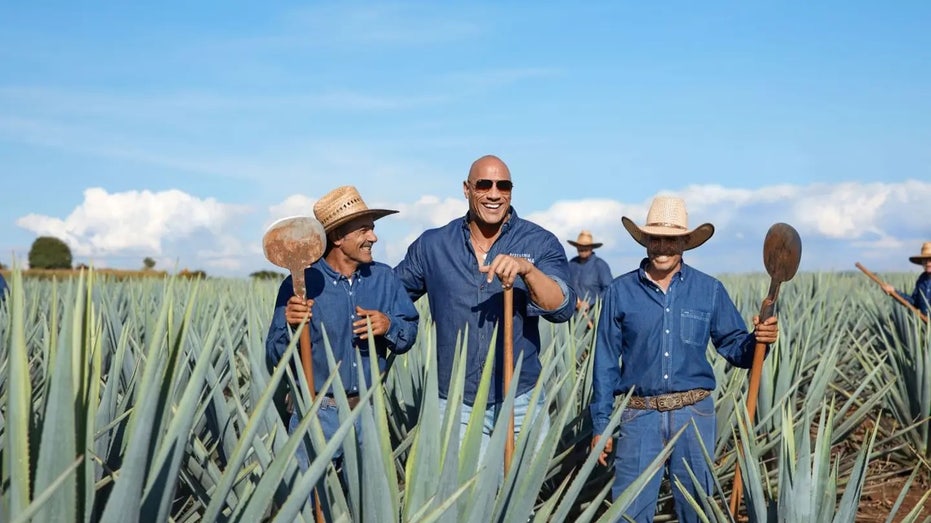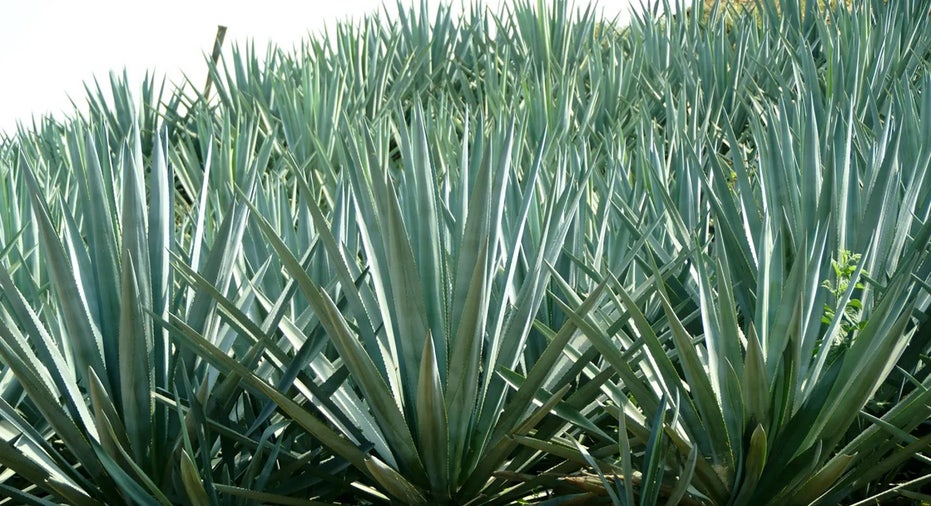California Agave Council founding director Craig Reynolds weighs in on tequila shortages and why several California distilleries are turning to agave-based spirits on “Kennedy.”
California faces one of the driest climates in the United States, making it an ideal location for harvesting a number of crops, including the natural agave nectar.
Conventional watering practices don’t apply to succulent plants like agave. Therefore, they are particularly drought tolerant, making the Golden State the motherland of plant productivity.
“California seems to be very well-suited in terms of the U.S. as a place for agave to grow,” Craig Reynolds, president of the California Agave Council, told FOX Business. “Winter frost is the most limiting factor for growing agave.”
AGAVE FARMERS WARN OF POTENTIAL TEQUILA SHORTAGE AS DEMAND SOARS AMID SUPPLY CHAIN SHORTAGES
Celebrities are oversaturating the agave spirits market at a rapid pace with their own lines of tequila. (Michael Persico / Teremana Tequila)
Though the constant uncertainty of drought or no-drought weighs on Californians’ minds, agave farmers, unlike soybean or wheat agronomists, don’t have to fear dry spells as they can capitalize on the lack of rain.
“Come to think of it, I do not know the last time it rained recently,” Kate Radivoyevitch, a San Diego resident, told FOX Business. “I want to say it was a month ago.”
Radivoyevitch moved from Ohio to California at the end of 2022, just as tremendous rain was emerging across the Bear State, freeing half of California from drought.
“When I first moved here, we got so much rain and everyone was shocked,” she said. “I was told how badly the state needed it.”
The truest drawback to harvesting the blue-green plant is that it takes five to seven years to fully mature.
“The interest far exceeds the ability at this point,” said Reynolds.
But because of the catapulted fascination with agave spirits, Reynolds said that farmers in California are transitioning some of their land for growing agave, especially in the Central Valley where water is a huge limiting factor.
And though California is the epitome of a gold, silver or imitation añejo mine, it’s not the only area in North America fielding the plants. Hawaii is also well-suited for harvesting agave and distilling its own spirits.
“Hawaii has seen success growing and distilling,” said Reynolds. “They’re doing a great job.”
TEQUILA’S DIRTY SECRET: IT’S CAUSING A MAJOR ENVIRONMENTAL PROBLEM IN MEXICO
Agave farms around California are rapidly growing as the state is ideal for harvesting the plant. (Tequila Herradura)
Reynolds went on to explain that agave spirits, not tequila or mezcal, were approved as a category for domestic sale by the Tax and Trade Bureau three years ago. Beverages including tequila and mezcal, much like champagne native to the region of Champagne, France, only come from designated areas in Mexico.
Tequila, specifically, is named after the town Tequila located in Jalisco, Mexico. Only five states in the country, Guanajuato, Jalisco, Michoacan, Nayarit and Tamaulipas, are authorized to make tequila.
California, though not brandishing Mexican blue agave, is fostering its own similar, high-quality spirits made from agave. At the forefront of yielding the spin-off, though, are first-rate products.
“The difference between what we’re doing in California is we have a high-quality standard for producing agave spirits,” said Reynolds. He noted it is now a state law in California that if an agave spirit label adorns the Golden State name and “agave spirits,” the alcohol must be made from 100% California grown agave and without any additives for flavor or coloring.
“From the get-go, we wanted to get in front of that and set a standard right from the beginning,” said Reynolds. The nonprofit trade association originated in early 2022 with 15 agave growers across California. Now, Reynolds says, that number has more than tripled in less than two years.
“No two distilleries are doing it the same way,” he said. “Some are cooking agave in pits the artisan way, some are doing it in a more modern way.”
Reynolds explained that “agave spirits as a category do represent a wide variety of artisanal mezcals” and have been produced using very old traditions, like cooking in stone earth pits or fermenting in old stills with wild yeast. Sometimes, distillers steam agave in brick ovens.
Liquor stores are oversaturated with celebrity agave spirit brands and Americans are taking to it.
AGAVE NECTAR SAFE, EFFECTIVE REMEDY FOR CHILDREN’S COUGH, STUDY SUGGESTS
And while the rudiments of agave for cocktail lovers may be for spirits, there are other applications – even healthy and economically handy ones – from which American farmers can profit.
“Agave for spirits is the highest rate of return,” said Reynolds. “But it’s a pretty amazing plant that has great potential as a green biofuel as opposed to using corn to produce ethanol.”
Reynolds said that, originally, the highest value for agave was used as a source of emissions for cargo ships. Additionally, the less-than-needy plant is a source of fiber and is also used to produce nectar syrup, which comes from the heart of the plant.
“Like all plants, the agave plant has a variety of different properties that make it unique, some of which are nutritionally beneficial for humans, others not as much,” Christina Palmisano, MS, MBA, RDN, told FOX Business.
Palmisano attests that fiber is a health benefit of consuming agave, but notes there are various types of fiber present in the plant including inulin – a prebiotic fiber – which is most beneficial to the body when consumed in its whole form.
“Despite the agave plant being a source of inulin, its nectar is also very high in fructose, a simple sugar that can have negative impacts on health when consumed in excess,” she said.
In California, you can find high-quality agave spirits at Ventura Spirits, Venus Spirits, Jackson Temple Distilling, Nixtaco, Jano Spirits, Don Manny, Shelter Distilling and St. George Spirits.
Credit: Source link






